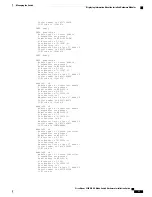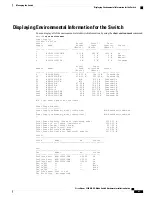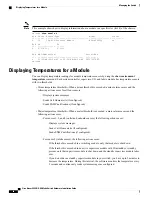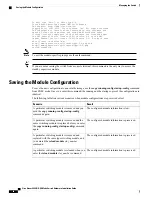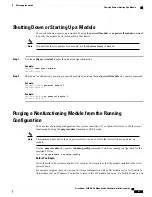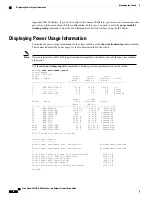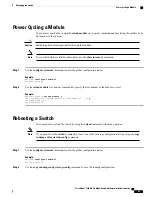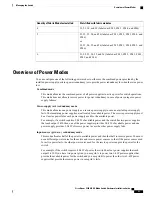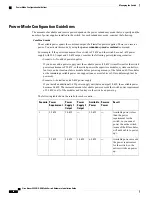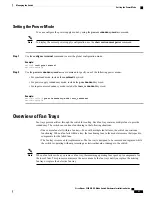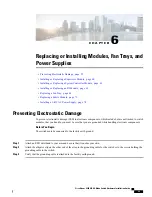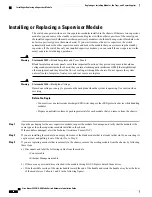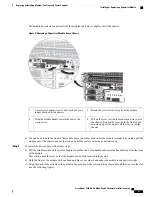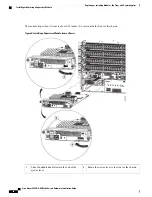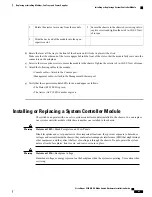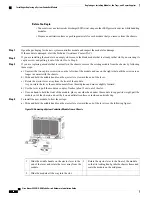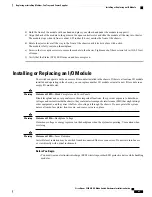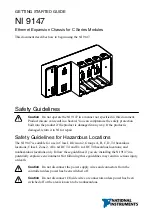
Example:
switch(config)#
copy running-config startup-config
Step 3
Use the
reload
command to reload the switch.
Example:
switch(config)#
reload
Overview of Supervisor Modules
The switch has one or two supervisor modules.
When a switch has two supervisors, one supervisor is automatically active while the other is in standby mode.
If the active supervisor goes down or is disconnected for replacement, the standby supervisor automatically
becomes active. If you need to replace one of two installed supervisor modules with another module, you can
do so without interrupting operations. The supervisor that you are not replacing becomes the active supervisor
and retains the kickstart configuration while you replace the other supervisor. If the switch has just one
supervisor, you can install the new supervisor in the open supervisor slot during operations and make that
supervisor active after the installation.
If there are two supervisors installed in the chassis, both must be the same type. That is, either both
supervisors must be supervisor A modules (four cores, 16 GB memory, and 64 GB of SSD) or both must
be supervisor B modules (six cores, 24 GB memory, and 256 GB of SSD).
Note
Supervisor modules are automatically powered up and started with the switch.
To understand the terms used for the supervisors, see the following table.
Description
Usage
Module Terms
•
Module-27 refers to the supervisor module in chassis
slot 27 (labeled as SUP 1 on the chassis).
•
Module-28 refers to the supervisor module in chassis
slot 28 (labeled as SUP 2 on the chassis).
Fixed
module-27 and module-28
•
sup-1 refers to the supervisor module in the SUP 1 slot
(slot 27 in the CLI output).
•
sup-2 refers to the supervisor module in the SUP 2 slot
(slot 28 in the CLI output.
Fixed
sup-1 and sup-2
Cisco Nexus 9504 NX-OS Mode Switch Hardware Installation Guide
50
Managing the Switch
Overview of Supervisor Modules


